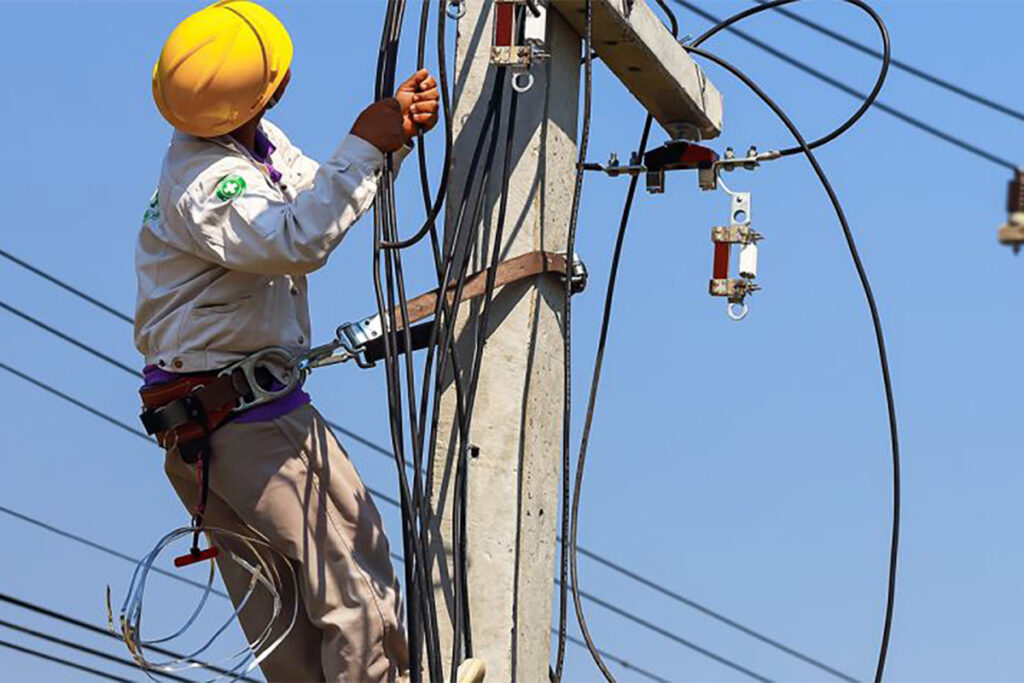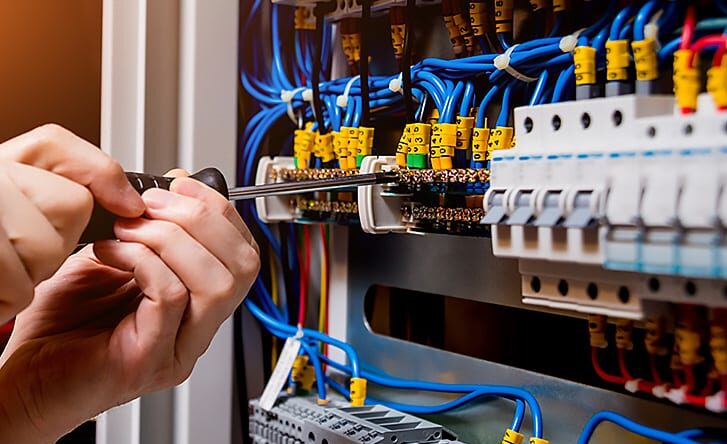About Lighting & Electrical
Unless you’re a licensed electrician, chances are most of your electrical encounters around the home will focus around testing, replacing and preventing — testing to ensure electrical equipment and connections are working properly, replacing worn or outdated electrical accessories (outlets, surge protectors and cords), and preventing your home from electrical hazards.
Walk through your home at least twice a year to inspect worn wiring, test all ground-fault circuit interrupters (GFCIs), particularly after electrical storms, and reorganize overloaded outlets. Then, make a list of the electric supplies necessary to make the proper updates and head to your local Ace. We can help provide the electrical products, electrical supplies and advice to get the job done right. We even stock flashlights and portable lighting to help you prepare for or get through emergency situations.
Check out our Tips & Advice section for guides to electrical maintenance and updates around the home as well as helpful do-it-yourself electrical project directions like how to install outdoor lighting. If you still have questions or have a more extensive update to make, be sure to consult a licensed professional.

Safety Tips and Tools for Working with Electrical Equipment
The Importance of Working Safely with Electrical Equipment
While working with or around electrical equipment, it is very import to work with caution and in a safe and smart manner. The voltage and electrical currents in businesses and homes has enough power to cause serious injury and even death. People working with electrical equipment are faced with this safety hazard on a daily basis, it is very important to wear the proper apparel and to follow some simple safety guidelines to avoid any possible injuries. By following these safety guidelines below you and your fellow workers will greatly reduce the risk for serious injury or even death.
Safety Guidelines To Avoid Injury or Even Death
Avoid contact with all energized electrical circuits. This may be an unwritten rule, but not following this rule just once could be fatal. A good way to avoid this is to assume all electrical devices and circuits are live. Never assume equipment is safe until you have confirmed it yourself, your life may depend on it.
Be sure to unplug the power source of all electrical equipment before working on it. Always pull from the plug, not the cord.
Always wear proper non conductive clothing – insulated gloves, non conductive protective apparel and shoes with insulated soles. Avoid loose clothing or ties.
Keep all water and liquids away from electrical equipment! If a spill does occur, immediately shut the power off at the circuit breaker or main power source and unplug the equipment.
If electrical equipment is producing a “tingle” or feels like it is overheating, immediately turn the power off. Repair if possible, if unrepairable dispose of the faulty equipment. Never take the risk of working with compromised equipment.
Enclose all electrical contacts and conductors to avoid accidental contact with them. Never leave exposed electrical contacts or conductors unattended.
When possible, work with only one hand, with your other hand at your side and away from all conductive material. This precaution will lessen the likelihood of an electrical current passing through the chest cavity.
Use only tools and equipment with non conductive handles. Tanner offers a full line of Electrician’s Insulated Hand Tools, learn more below.
Electrician’s Insulated Hand Tools Offered at Tanner
Tanner offers an extensive line of Electrician’s Insulated Hand Tools. The insulated hand tools have color coded handles with a bi-color warning system, when a tool’s insulation has been compromised the handle will change from orange to yellow. These hand tool have been wrapped with a thick layer of plastic insulation and have been individually tested to 1,000 volts AC and 1,500 volts DC

Periodic Inspection Explained
All electrical installations deteriorate with age and use. They should therefore be inspected and tested at regular intervals to check whether they are in a satisfactory condition for continued use. Such safety checks are commonly referred to as ‘periodic inspection and testing’
From June 2020, private landlords in England are required to have a periodic inspection carried out on the installations in their rental properties every five years. This has been a legal requirement in since 2015.
A periodic inspection will:
Reveal if any of your electrical circuits or equipment are overloaded.
Find any potential electric shock risks and fire hazards.
Identify any defective electrical work.
Highlight any lack of earthing or bonding.
Your electrics should be inspected and tested every:
10 years for an owner-occupied home.
5 years for a rented home.
3 years for a caravan
1 year for a swimming pool.
Other times when a periodic inspection should be carried out are:
When a property is being prepared for letting.
Before selling a property or buying a previously-occupied property.
Who should carry out the periodic inspection and what happens?
Periodic inspection and testing should be carried out only by electrically competent persons, such as registered electricians. They will check the condition of the electrics against the UK standard for the safety of electrical installations, BS 7671 – Requirements for Electrical Installations (IET Wiring Regulations).

Most Common Causes of Electrical Accidents
When it comes to electrical hazards, prevention depends on safe equipment, safe environment and safe work practices. Read the details on each below.
Today’s employee’s work with or uses electricity directly or indirectly throughout the workday. Since it has become such a familiar part of our daily lives, we tend to overlook the hazards electricity poses.
The Occupational Safety and Health Administration (OSHA) standards cover many electrical hazards in a variety of industries. OSHA’s General Industry standards found in Title 29 CFR Part 1910.302-308, Design of Safety Standard for Electrical Systems; Part 1910.331 through 1910.335, Electrical Safety-Related Work Practices; and Part 1910.147, Lockout/Tagout. All three of these parts have appeared in OSHA’s top most cited sections for the past several years.
Safe Equipment
All electrical workplace conductors and equipment must be deemed “acceptable” by OSHA. To be deemed acceptable, equipment must be marked as tested by a Nationally Recognized Testing Laboratory (NRTL), such as Underwriters Laboratory (UL) or Factory Mutual (FM). OSHA will look for these markings on the equipment to deem it safe. The equipment must be installed and used within its labeled capacity so as to not exceed the limitations of the equipment (e.g., putting the wrong switch for too much load, causing it to overheat).
Matching the equipment specifications to the load expectations of the installation will help prevent unsafe conditions. Always use a qualified electrician to perform all electrical work.
Where to start with design of electrical installation?
Design / redesign of electrical installation
The power analysis must be always the at the very top of your tasks in design of an electrical installation. It will enable the source(s) to be sized according to the purpose of the installation, the intended use of the circuits and the receivers to be supplied.
Based on this knowledge of the power consumed, the chosen service requirements and the chosen source, the following can then be carried out:
Determination of the conditions for protection of people,
Calculation of the conductor cross-sections,
Protection for each level in the installation, and
Selection of the appropriate electrical devices and equipment.
Analysis of the loads
The loads supplied by the electrical installation can be of various types depending on the business: motive power, variable control units, lighting, IT, heating, etc.
Depending on the individual case, the electrical operating parameters (phase shift, efficiency, inrush transients, harmonics, etc.) will be different. The power to be considered is not limited to the simple reading of a value in watts.
All electrical receivers consume a total or apparent power S (expressed in volt-amperes or VA) equal to the product U × I. The same unit is used to express the power that the generator or transformer must be able to supply.